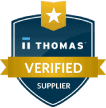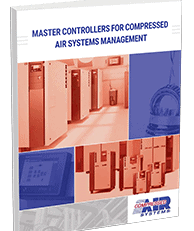The Environmental Impact of Condensate Management
As with most industrial processes, the creation of compressed air can produce undesirable byproducts that must be managed to keep processes running smoothly. One of the most prevalent consequences of using compressed air systems is the creation of condensate, a mixture of moisture and oil.
Compressed air systems are regularly flooded with oil; a 100-Hp compressor passes an average of 10 gallons of oil per year. Just 1 gallon of oil, however, can contaminate about a million gallons of water.
 Compressors, therefore, are at risk of passing traces of oil and contaminants from within the air stream, an emulsified combination known as contaminated compressed air condensate, into the environment. On average, contaminated condensate is 5% oil and cannot be passed into wastewater without approved purification, as these oils can be harmful to the surrounding environment.
Compressors, therefore, are at risk of passing traces of oil and contaminants from within the air stream, an emulsified combination known as contaminated compressed air condensate, into the environment. On average, contaminated condensate is 5% oil and cannot be passed into wastewater without approved purification, as these oils can be harmful to the surrounding environment.
If contaminated condensate gets into soil, the water will eventually evaporate, leaving the oil behind. Besides harming the ecosystem, releasing untreated contaminated compressed air condensate into the environment can ultimately lead to legal issues and increased costs. To avoid these setbacks, it’s critical to treat the condensate according to global environmental standards.
Businesses must make condensate management a priority and have reliable processes in place for the proper removal and disposal of oil.
Effective Condensate Management
Onsite separation of oil and water from the condensate can provide a permanent, reliable solution while providing added cost savings. Facility managers, therefore, must ensure they have the necessary filtration and drain equipment in place to properly treat contaminated condensate.
When effectively sizing a condensate management filter, facility managers should consider a few different factors: the type of oil being used, ambient conditions such as temperature and humidity, and the number of discharge lines being fed into the filtration system. To keep in line with best practices, it’s also important to regularly test treated condensate for oil concentrations in order to verify that the discharge is clean and no maintenance is required.
Want to learn more about effective condensate management? Download our guide!
De-emulsification and Gravitational Separation System Overview
The de-emulsification and gravitational separation process begins with pressurized contaminated condensate flowing into a pressure relief chamber, bringing the condensate back to atmospheric pressure. The condensate is then gravity fed into a cartridge, where a series of filter stages capture the oil, allowing only clean water to pass.
The newly purified water will now meet the legal requirements regarding wastewater discharge and can then be safely expelled into the municipal drain. Once saturated, the lightweight, easy-to-change filter cartridge can be disposed of normally — safe for any sanitary landfill.
Compressed Air Systems’ Commitment to Reducing Environmental Impact
Compressed Air Systems, Inc. (CAS) has over 50 years of experience providing top-quality, reliable compressed air solutions to meet customers’ specific needs. Our condensate management systems allow companies to effectively and easily capture oil from contaminated condensate in order to release clean water that meets local and global environmental standards.
At CAS, we can provide the components and filters you need to ensure your compressed air systems are running as cleanly and efficiently as possible. To learn more about our condensate management solutions and discuss how to minimize your company’s environmental impact while saving on costs, contact us today.










